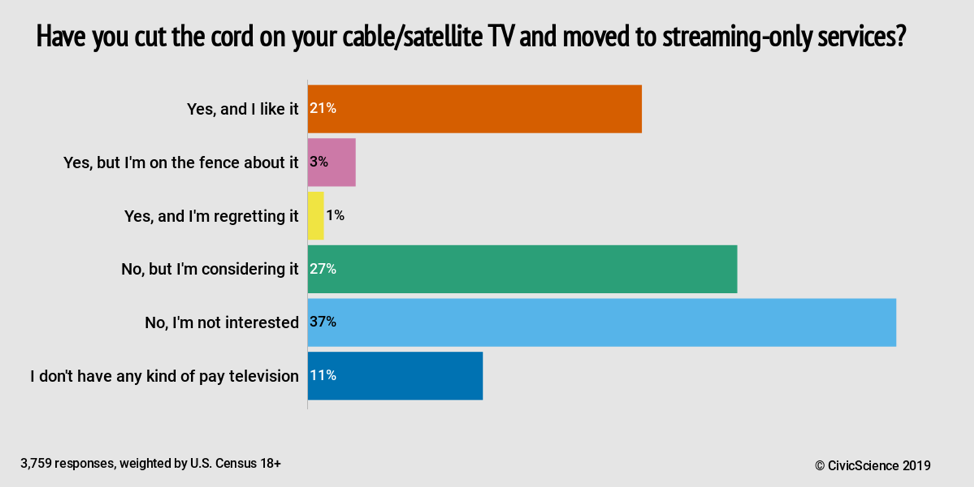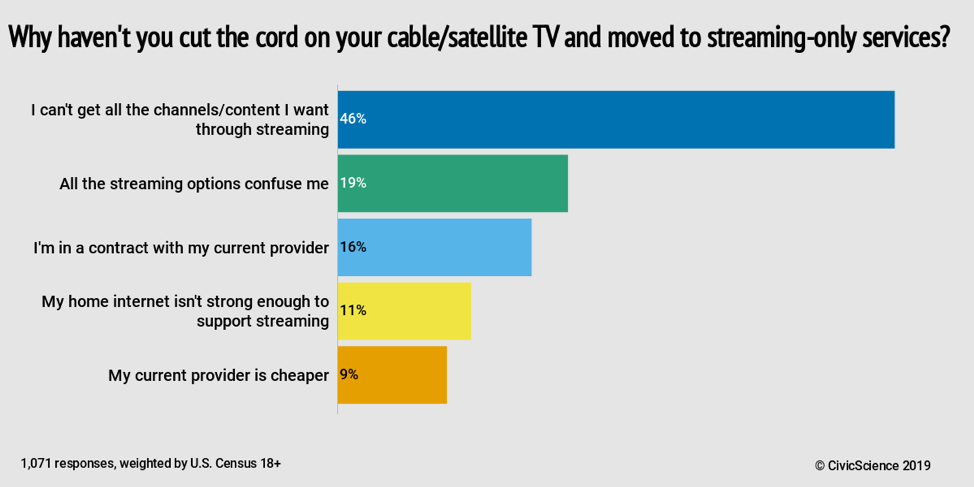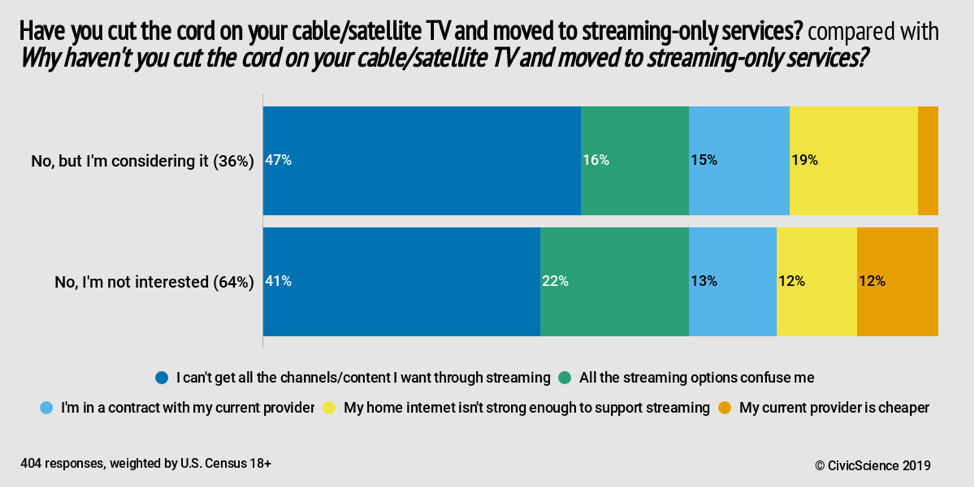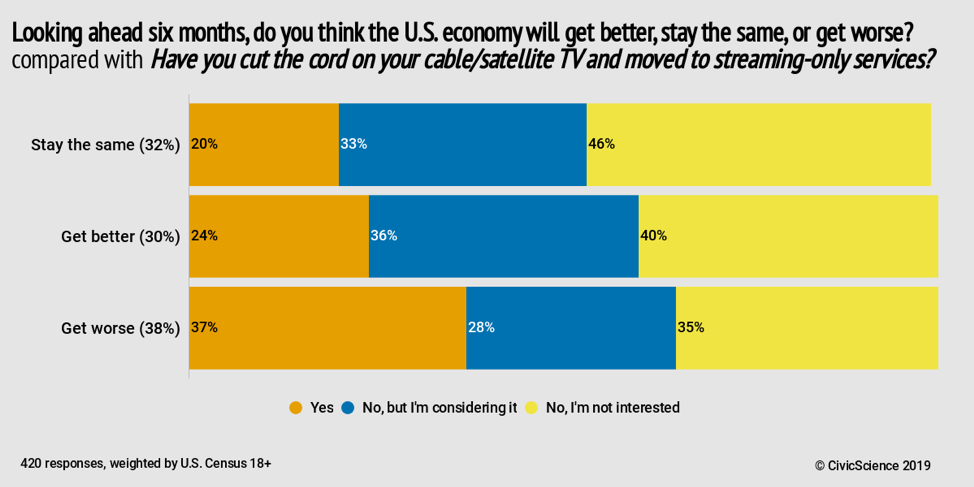Editor’s note: John Dick is CEO of CivicScience, a Pittsburgh-based research firm. This is an edited version of a post that originally appeared under the title, “Cord-cutting is about to explode.”
It’s no secret that Americans are ditching their cable and satellite services and moving to streaming-only options that promise more choice and lower cost. But the latest CivicScience data suggest that consumers are going to be cutting the cord much faster (and sooner) than most experts previously believed.
A recent survey of over 3,700 U.S. adults found that 25 percent of Web-enabled Americans have moved to streaming-only services and 28 percent of people dropped another pay TV service to get there.

The 28 percent of Americans who cut the cord is a big number but it’s not the most remarkable number in this chart. Twenty-seven percent of Americans are actively considering cutting the cord – which represents 31 percent of consumers who currently have some form of pay TV.
Only 37 percent of Americans and 41 percent of current pay TV customers appear safe to the cable/sat providers. As expected, these never-cord-cutters skew much older and more rural than the average consumer.
What’s keeping people tethered?
We also ran a question inquiring about the main reasons consumers are choosing not to cut the cord. Here’s what 1,071 folks had to say:

By far, the number one reason people are sticking with their cable or satellite provider is the fact (or perception) that they can’t get all of the channels they want through a streaming service. Confusion over the various options and process of cord-cutting came in second, particularly of concern among women and older respondents. Eighteen percent of people are only waiting to cut the cord until their current TV contract is up. Eleven percent, mostly in rural areas, blame weak Internet service and 9 percent believe they have a better deal with their current provider.
Cord-cutting aversion can be overcome
Let’s look at the intersection of the two questions above. Below is a cross-tabulation showing only people who have not cut the cord, split between the considerers and the nevers.

As you can see, concern over channel selection is an even more prominent deterrent among the considerer group. This suggests that as the streaming providers continue to educate potential cord-cutters about their near-parity with cable/satellite services, these people could make the leap quickly. Confusion over services and legacy contracts are also surmountable for the streaming services over time.
A sourcing economy will accelerate cord-cutting
When we scoured the CivicScience database to find the strongest predictors of cord-cutting behavior, questions related to consumer economic sentiment rose to the top.

Evident in the chart above is a significant correlation between cord-cutting and economic outlook. In other words, the more pessimistic someone is about the U.S. economy, the likelier they are to have cut the cord. Thirty-seven percent of people who expect the economy to worsen over the next six months have already dropped their cable and satellite provider.
As economic sentiment in the U.S. continues to soften – as CivicScience data has consistently shown – we should expect an even faster acceleration of cord-cutting behavior.
